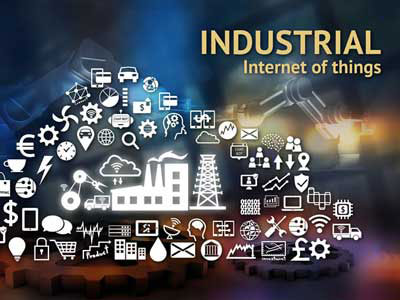Key Takeaway
The Internet of Things (IoT) connects everyday devices, like smart home gadgets, to the internet for easier and more convenient living. Think of smart thermostats or wearable fitness trackers.
The Industrial Internet of Things (IIoT), however, focuses on the industrial sector. It connects machines in factories or power plants, enabling automation and real-time data exchange to optimize production, enhance efficiency, and improve safety. IIoT handles more complex, large-scale operations compared to IoT.
Definitions and Scope of IoT vs IIoT
IOT refers to the network of interconnected devices that communicate and share data over the internet. These devices range from household gadgets like smart thermostats and wearable fitness trackers to sophisticated systems in smart cities, all aimed at making everyday tasks easier and more efficient. On the other hand, IIoT, or the Industrial Internet of Things, focuses specifically on industrial applications. It involves the integration of sensors, software, and advanced analytics with industrial machines and infrastructure to improve operational efficiency, safety, and productivity. While IoT targets consumer-level convenience, IIoT is designed for large-scale industrial optimization.

Applications and Use Cases in Different Sectors
IoT Applications in Various Sectors
IoT applications span diverse sectors, enhancing efficiency and convenience. In healthcare, IoT enables remote patient monitoring, allowing doctors to track vital signs and health metrics in real-time. This reduces hospital visits and improves patient care. Smart homes utilize IoT devices like smart lights and security systems to enhance convenience and safety, allowing homeowners to control and monitor their homes remotely. In agriculture, IoT supports precision farming by monitoring soil moisture levels, weather conditions, and crop health, leading to better yields and resource management. Overall, IoT technology is transforming everyday life and business operations by making them more connected and efficient.
IIoT Applications in Manufacturing, Energy, and Transportation
IIoT, or Industrial Internet of Things, is pivotal in manufacturing, energy, and transportation sectors. In manufacturing, IIoT enables predictive maintenance, where sensors monitor equipment health to anticipate failures, reducing downtime and maintenance costs. The energy sector uses IIoT to optimize power grids, ensuring efficient energy distribution and monitoring equipment performance for reliability. In transportation, IIoT enhances fleet management and logistics by providing real-time tracking and data analytics, improving route planning and operational efficiency. These applications demonstrate IIoT’s role in driving industrial efficiency, safety, and productivity.
You May Like to Read
Technology Stack in IoT vs IIoT
IoT Technology Stack
The IoT technology stack consists of sensors, connectivity, data processing, and user interfaces. Sensors collect data, which is transmitted via connectivity options like Wi-Fi, Bluetooth, or cellular networks. Cloud computing platforms such as AWS IoT and Google Cloud IoT are crucial for data storage and processing, providing comprehensive solutions for managing IoT ecosystems. User interfaces enable interaction with the IoT system, allowing users to monitor and control connected devices. This stack supports a wide range of applications, from smart home devices to remote health monitoring systems.
IIoT Technology Stack
IIoT requires a more robust and secure technology stack due to the critical nature of industrial operations. It includes industrial-grade sensors that withstand harsh environments, real-time data processing for instant decision-making, and secure communication protocols like MQTT and OPC UA to ensure data integrity and security. Edge computing is vital in IIoT, processing data close to the source to reduce latency and enable rapid responses. This technology stack is essential for applications such as predictive maintenance in manufacturing, optimizing power grids in the energy sector, and enhancing fleet management in transportation. The robustness and security of the IIoT stack ensure reliability and efficiency in industrial operations.
Challenges and Solutions in Both Domains
The Internet of Things (IoT) faces several key challenges, particularly in data security, interoperability, and scalability. As more devices connect to the internet, ensuring data privacy and protection is crucial. One major issue is data security, as IoT devices often lack robust security measures, making them vulnerable to cyberattacks. Implementing strong encryption methods and secure communication protocols can help mitigate these risks. Another challenge is interoperability. With numerous devices from different manufacturers using various communication standards, achieving seamless integration is complex. Adopting universal standards and protocols can address this issue, ensuring devices work harmoniously. Scalability is also a concern due to the massive amounts of data generated by IoT devices. Utilizing scalable cloud services can efficiently manage and store this data, ensuring smooth operation as the number of connected devices grows. These solutions collectively enhance the reliability and effectiveness of IoT systems, making them more secure, compatible, and scalable.
Comparative Benefits of IoT and IIoT
The Internet of Things (IoT) offers numerous benefits across various domains, including improved convenience, energy efficiency, and personalized user experiences. Smart home devices, for example, can optimize energy usage by learning and adapting to user habits, significantly reducing energy consumption and costs. Wearable health devices provide real-time health monitoring and personalized health insights, enabling individuals to make informed decisions about their well-being. In smart cities, IoT facilitates better resource management, leading to enhanced public services such as efficient waste management, improved traffic flow, and better energy distribution. These applications highlight the transformative potential of IoT in creating more efficient, responsive, and personalized environments. The convenience and efficiency brought by IoT devices make daily life easier and more comfortable, demonstrating the broad impact of this technology on various aspects of modern living.
Conclusion
Understanding the differences between IoT and IIoT is crucial for their effective application. IoT focuses on enhancing consumer experiences and everyday convenience, while IIoT targets industrial efficiency and safety. Both technologies, though distinct in their applications and challenges, play a pivotal role in transforming their respective domains. Embracing IoT and IIoT technologies can lead to significant advancements in various sectors, driving innovation and improving quality of life and industrial operations. As these technologies continue to evolve, their integration will undoubtedly unlock new possibilities, fostering a smarter, more connected world.
